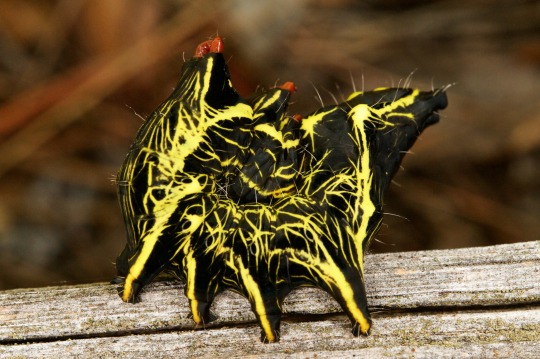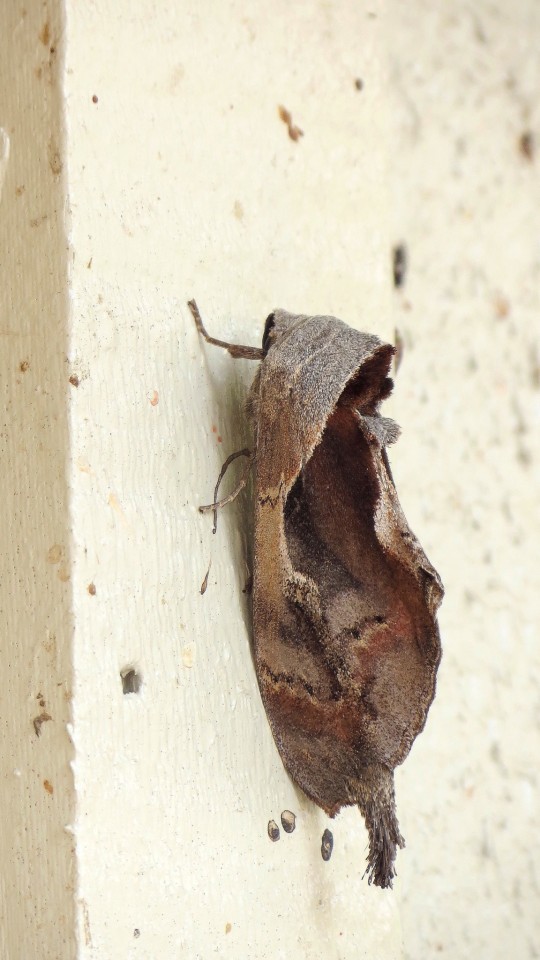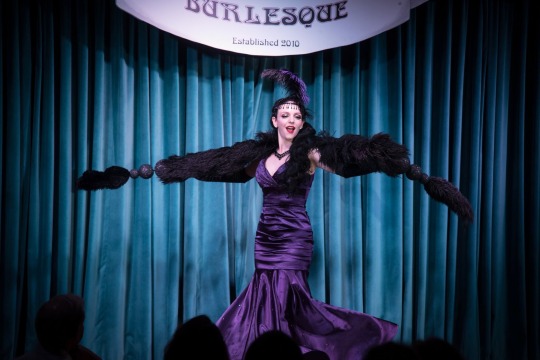#mexican prominent moth
Text








Mexican prominent moth caterpillars and adults, Crinodes biedermani, Notodontidae
Photo 1 by gerardoochoa, 2-4 by flecksy, 5 by southwestwanderer, 6 by milkweedhunter, 7 by paul_dennehy, and 8 by gemlin
#animals#curators on tumblr#insects#bugs#moth#prominent moth#mexican prominent moth#caterpillar#larva#one nice bug#why he like that
1K notes
·
View notes
Text
President’s Side Piece is a Primadonna (Pt. 1)

To paint a scene; 1890, America. The industrial revolution was at its peak and the U.S. was a prominent country in its export economy, soon becoming a superpower in the world’s economy. At the top of this empire of democracy was President Funny Valentine, the 23rd President of the United States. A man respected from sea to shining sea for his patriotism and looks. He had it all: the love of his country, a beautiful wife, but specially the prettiest girl wrapped around his pinky finger.
(Y/n) (L/n) wasn’t just any girl, her beauty was beyond anything America had seen. Born to a rich and highly influential Texan family that specialized in being livestock auctioneers. The third child and only daughter of 6 children. Her beauty was unparalleled, she’d rejected the hand of many and has surrounded herself with only the best of the country. Amongst which was the President himself. And of course, her family urged her to become very close to him. Nonetheless, she did as advised.
“Mr. President...” (Y/n) whined. She held up a bitten piece of bread that upon inspection was a specific type of Mexican bread named Concha. Her face had obvious hints of dislike for the already bitten bread which seemed to be the reason for her complaint.
“What’s wrong my Bluebonnet?” Valentine asked as he walked up to her, placing his hands on her shoulders and massaging them gently.
“This Concha doesn’t taste the same like the ones Sarita makes at home. I refuse to eat it like this.” She whined again, her thick but sweet-sounding country accent adding sensuality to her dress that already pushed up her reddish, soft-looking bust.
“Oh Bluebonnet… It probably doesn’t taste bad, I’m sure it’s just a slight difference my dear.” He mumbled, kissing her cheek.
“No Funny, I’m not eating this. It doesn’t taste like the original.” She scoffed, crossing her arms and turning her face away from him in a tantrum.
He squeezed her cheeks between his four fingers and his thumb, looking at her with a stern but sexy gaze, “What did I say about getting too bratty about little things with me?”
He held the wrist of the hand that you held up the bread with while still having a grip of your face. He forced you to make eye contact with him and as you did, he bit a piece of the bread, chewed and swallowed the piece.
“This tastes splendid, my little Bluebonnet. I’ll say it again: I’m sure it doesn’t taste bad to you; but rather unfamiliar.” He mumbled seductively, letting go of her face. Still holding your arm, he moved the it towards your moth so you would bite the bread.
“Eat it.” He commanded. She did as told, savoring the sweetness of the bread. Yeah, it wasn’t an authentic, Mexican Concha, but it still tasted good…
“Tell me, would you eat it if I fed it to you?” He mumbled, the words flowing out of his mouth like honey.
“Yes, Mr. President~.” She cooed scooting closer to him.
“Good girl.~” He cooed back.
It wasn’t uncommon of him to put her in her place when she acted up, but it also wasn’t uncommon for him to let her get away with things like begging him for dresses, or a cute little porcelain doll to put in her room. He’d spoil her rotten when it came for small little material things. But when it came to her whining about things not going her way…
They either resulted in him simply scolding her (like he’d just did), or punishing her accordingly. Either way, he adored. He simply couldn’t get enough of her!
~~~~~~~~~~~~~~~~~~~~~~~~~~~~~~~~~~~~~~~~~~~~~~~~~~~~~~~~~~~~~
Requests are open! :DD
#funnyvalentinexreader#funny valentine#JJBA#jjba x reader#jojo no kimyō na bōken#jojopart7#jojos bizzare adventure x reader#fanfiction
50 notes
·
View notes
Text
Virtual Sketchbook 2
1. The Principles of Design:
Unity- Portraying a consistent, harmonious, and overall sense of oneness in the appearance of a piece of artwork.
Everyday life example: My kitchen cabinets are symmetrically placed next to each other and attached to the wall. They are all the same size, the same shade of light brown, and feature the same round handle.
Variety- The opposite of unity; portraying assorted styles or elements in a piece of artwork.
Everyday life example: My burlesque outfits and props are together in one room, yet are all different colors and styles. Robes, gowns, and skirts of diverse colors, lengths, and materials hang next to each other while various headpieces of feathers, rhinestones, and other elements adorn the shelf above.
Balance- Stability in a piece as a whole. Can be symmetrical with each side being nearly identical, or asymmetrical in which they are not close to being identical.
Everyday life example: When I draw on my winged eyeliner, I always try to make the left eye symmetrical to the right eye for an overall balanced appearance.
Emphasis & Subordination- Bringing attention to a particular area of a piece while making other areas unnoticeable and not distracting, in order for the focus to remain on the emphasized focal point.
Everyday life example: My front door is painted a bold red whereas the rest of the house is a light, neutral color that brings focus immediately to the door rather than anywhere else.
Directional forces- Lines in a piece in which the viewer’s eyes follow, whether they are actual or implied.
Everyday life example: The lines on the top and front of my antique roll top desk are bold actual horizontal lines.
Repetition & Rhythm- Visual parts of a work of art that are seen more than once and that might have different variations, but blend well together.
Everyday life example: One of the walls in my home I have decorated with framed taxidermy butterflies and moths. They are all similar yet completely different, and provide a beautiful array of size, color, and species.
Scale & Proportion- The sizes in a work of art and how they relate to each other and on their own.
Everyday life example: When I leave a cardboard box out for my cats, one of them likes to squeeze herself into it though she knows it’s much too small. It’s amusing to see a chunky cat in a box that is two sizes too small for her to sit in comfortably, and makes for an adorable photo.
2. Figure 2.17, page 30. Frida Kahlo, The Broken Column

The Broken Column contains a significant focus on horizontal lines, neutral and subdued colors, spatial depth, and symbolism.
The horizontal lines in the background that depict the horizon line and the cracks in the earth all correspond with the horizontal lines of the structural corset, strong shoulders, and bold eyebrows bestowed upon Kahlo’s interpretation of herself. Spatial depth is utilized, in which Kahlo stands closely to the viewer front and center while alone, with a shattered and cracking landscape behind her that veers off into the distance. The neutral and subdued colors in shades of brown, black, white, blue, and green, are quite opposite to many of Kahlo’s other works, which include bright colors representational of her Mexican heritage. The color choices might reflect a melancholy mindset for Kahlo, rather than the passionate one used to create many of her bolder pieces. Symbolism is very prominent in The Broken Column, which depicts Kahlo’s severe pain from a traffic accident that she endured throughout her life. The solo figure on a vast stretch of land represents her feelings of loneliness, while the nails pressed throughout her body portray the feelings of constant, chronic pain. Her calm expression yet flowing tears show that she quietly yet resiliently lives a life of physical torment. The blatant bareness of her body with the restricting corset and column inside her body symbolizes the uncomfortable truth about what was going on in Kahlo’s mind, body, and soul at the time of this painting.
3. When I was 19, color drastically changed my appearance and altered my style into what it is now. I was a natural blonde for my first almost two decades of existence, with wavy fair hair that curled down to my waist. I spent most of my life as a light eyed blonde, looking similar to so many others, especially in the beach location of Fort Lauderdale.
Then one day, I discovered who Bettie Page was. Her confidence, her style, her influence, and her appearance were everything I wanted to be. I picked up a pair of scissors, hacked off that mane of gold, and colored it a rich, dark black. Being the person that I am, I didn’t want just ordinary black hair. I desired a shade of black with a hue of an intense, rich blue, that when reflected in the sunlight depicted a color like the wings of a raven. Here I am almost a decade later, religiously coloring my hair the same shade of deep blue-black every three or so weeks to make sure it never appears dull. My hair defines my look, and I’m known for my alabaster skin, light eyes, and hair as dark as night.
If I had to choose a “color scheme” for my life, it would probably be the palette that ranges from blue into green. My eyes tend to change color with how I’m feeling. On a good day they are their usual blue tinted with green which reflects an almost turquoise mixed with aquamarine. When sad or filled with tears, they’re immediately the palest shade of blue. When angry, they’re completely green in which my boyfriend Lorenzo refers to me as the “green eyed monster.”
4.



5. Black and White vs. Color Photography

Bunny Hartley Casting a Shadow on Her Face by Horst P. Horst. Photograph, 1938.

Muriel Maxwell Reflected Around a Column by Horst P. Horst. Photograph, 1940.
The choice of black and white vs. color is motivated by a number of factors including the emotion that is meant to be conveyed, the purpose of the photo itself, and the aspects of the photo's composition such as subject placement and lighting. Both black and white as well as color can definitely influence the way that you are feeling or looking at the subject.
For example, in the photo Bunny Hartley Casting a Shadow on Her Face, the usage of black and white emphasizes the dramatic shadows throughout the picture and provides an almost eerie or spooky mood. In the photo Muriel Maxwell Reflected Around a Column, the bold use of color brings emphasis to the very balanced symmetry and the clothing in the photo. Horst P. Horst, the photographer of both pictures, was well known for his fashion photography. Both of these photos were at some point in fashion magazines such as Vogue, and were designed to be both artistic as well as have the ability to appeal to consumers. Both are extremely eye catching, and if the colors had been reversed, they might not be as vivid as they are now.
0 notes
Text
Hyperallergic: Lezley Saar’s Melancholic Poetics of Identity
Lezley Saar, Vesta the Johnny, (2015), acrylic on fabric over wood panel, 20″ x 16.” (Photo: August Augustsson. Courtesy of Walter Maciel Gallery.)
LOS ANGELES – Lezley Saar explores the ambiguities of being neither black nor white, male nor female. For decades Saar has looked behind the veil of superficial appearance, to explore the emotional conflict underlying mistaken identity from the perspective of a biracial woman who looks white – but feels black. Gender Renaissance at Walter Maciel Gallery extends her critique of identity politics into an exploration of transgender experiences inspired by her 24-year-old son’s female-to-male gender transition.
As Betye Saar’s daughter, she is a legacy artist and second-generation feminist, but she was the fairest skinned member of a family of black feminist artists, which also includes her sister, artist Allison Saar. Her own experience of feeling different allowed Saar to empathize with her son, whom she has described as “a tomboy who always disliked being in a female body.”
Lezley Saar, The Silent Woman (2015), acrylic on fabric over wood panel, 20″ x 16.”(Photo: August Augustsson. Courtesy of Walter Maciel Gallery.)
With Gender Renaissance Saar goes beyond identity politics by creating a melancholic poetics of identity. It takes its impetus from her feminist stance on gender transitioning as an emblem of gender’s fluidity in an era when both sex and gender are understood as a spectrum, much like her own relationship with race. The melancholic tone of her paintings exposes their internal conflict, evoking both the sadness of losing her daughter and the relief and pride in her son’s courage to transition.
The exhibition contains two banners from her earlier Mulatto Nation series exploring the contradiction between perceptions of biracial people by others and their own internalizations of their mixed heritage. Saar’s integration of Mexican colonial painting into her aesthetic accentuates the mixing of cultures, while her use of collage reflects her legendary artist-mother, who learned from her grandmother how to make gifts from found materials. Each female generation in this prominent artistic lineage learned how to make art organically, by recycling everyday things around them, but Lezley found her artistic independence by approaching painting through collage.
In “Dorothy Champ” (2002), glistening crystal tears falling from the sad blue eyes of the beautiful biracial actress conjure the actress’s emotional conflict over leaving a successful Broadway career to become a Bahai activist, while in “Nella Larsen…Passing” (2003) she places a white lace veil over a portrait of an author who explores biracial identity. These are monuments to founding mothers of a mixed nation caught between two worlds. A third banner, “Fez” (2004), is from her series of portraits of biracial prostitutes in western colonial countries who turned to the oldest profession because they were rejected by both worlds from which they descended.
Lezley Saar, Forbidden Fruit (2017), acrylic on fabric over wood panel, 24″ x 18.” (Photo: August Augustsson. Courtesy of Walter Maciel Gallery
Saar’s new paintings, displayed in the main gallery space, are small, tender portraits of effeminate mixed race men proudly dressed in fashionable female attire. Unlike her earlier mulatto series, her transgender and cross-dressing characters are playfully rendered, celebrating gender bending. These intimate portraits are based on the real and fictional historical figures who frequented Molly Houses, like The Uranium and The Cave of the Golden Calf, in 18th– and 19th-century England, where homosexual men could meet in drag. Saar lifts the curtain to explore this secret society, using small scale, altered perspective, and curious objects to represent the unique stories of people who subverted binary notions of gender long before transgender was normalized.
Lezley Saar, I felt in love with this piece of you (2017), acrylic on fabric over wood panel, antique frame with glass, 23″ x 17″. (Photo: August Augustsson. Courtesy of Walter Maciel Gallery.)
In several works, Saar juxtaposes artifice with nature. For the artist, “nature symbolizes truth,” whereas cultural constructions of race and gender are arbitrary. She has said that, “my own experience of not fitting in being black, but looking white, led me to question what is truth.”
Deeply influenced by Proust’s In Search of Lost Time, she explores his idea “of turning to nature to get at a certain truth” – “a person’s own truth” – in her paintings. Three paintings in the exhibition invoke birth through the iconography of eggs. In “Vesta the Johnny” (2015) a vaudeville male impersonator, based on real life male-impersonator Vesta Tilley, stands pensively in thought, beside a gigantic egg; in “Teetering on the Ledge of a Transient Thought” (2016) a dish of eggs is precariously balanced on a man’s head and a shell and bat adorn his face; and in “A Perfect Gentleman” (2016) three egg-like mushrooms sprout from a patch on a man’s head and a butterfly and pink rose adorn his face.
In other works, Saar uses moths as a leitmotif. “Brainville” (2016) and “I Felt in Love with this Piece of You” (2017) use mental landscapes to suggest that gender resides inside the brain – the transgender subjects might feel out of sync with their assigned gender but the moth suggests their authentic truth might be a metamorphosis.
Lezley Saar, I dream the body… (2017), acrylic on fabrics with fringing, braided tassels and curtain rod, 101″ x 55″. (Photo: August Augustsson. Courtesy of Walter Maciel Gallery
In these cameo paintings Saar uses intimate scale to take us inside the private worlds of people who are outside the norm. In contrast, the exhibition’s centerpiece, “I Dream the Body” (2017), is a heraldic banner portraying a regal albino black with a long white afro mane who assumes the role of royalty in this realm of otherness.
The flat frontal focus of Saar’s cameo paintings and portraits recalls the charming naivete of early American Limner portrait painting. The sincerity of her painting style is grounded in an appreciation for authentic expression: Saar’s heartfelt historic narratives raise questions about contemporary social issues that allow the viewer to ponder and draw their own conclusions. Like her grandmother making gifts from things around her, which influenced her mother’s pioneering assemblages, Saar recycles stories from her historic research and gives them to viewers for their own reflective musing.
Gender Renaissance continues at Walter Maciel Gallery (2642 S. La Cienega Blvd, Los Angeles) through July 1.
The post Lezley Saar’s Melancholic Poetics of Identity appeared first on Hyperallergic.
from Hyperallergic http://ift.tt/2tB9R6S
via IFTTT
1 note
·
View note